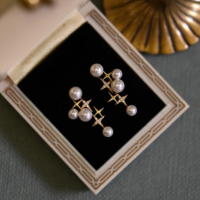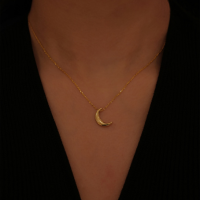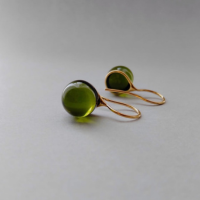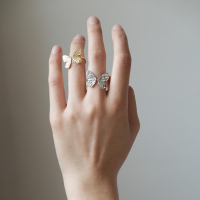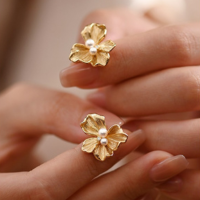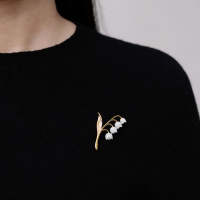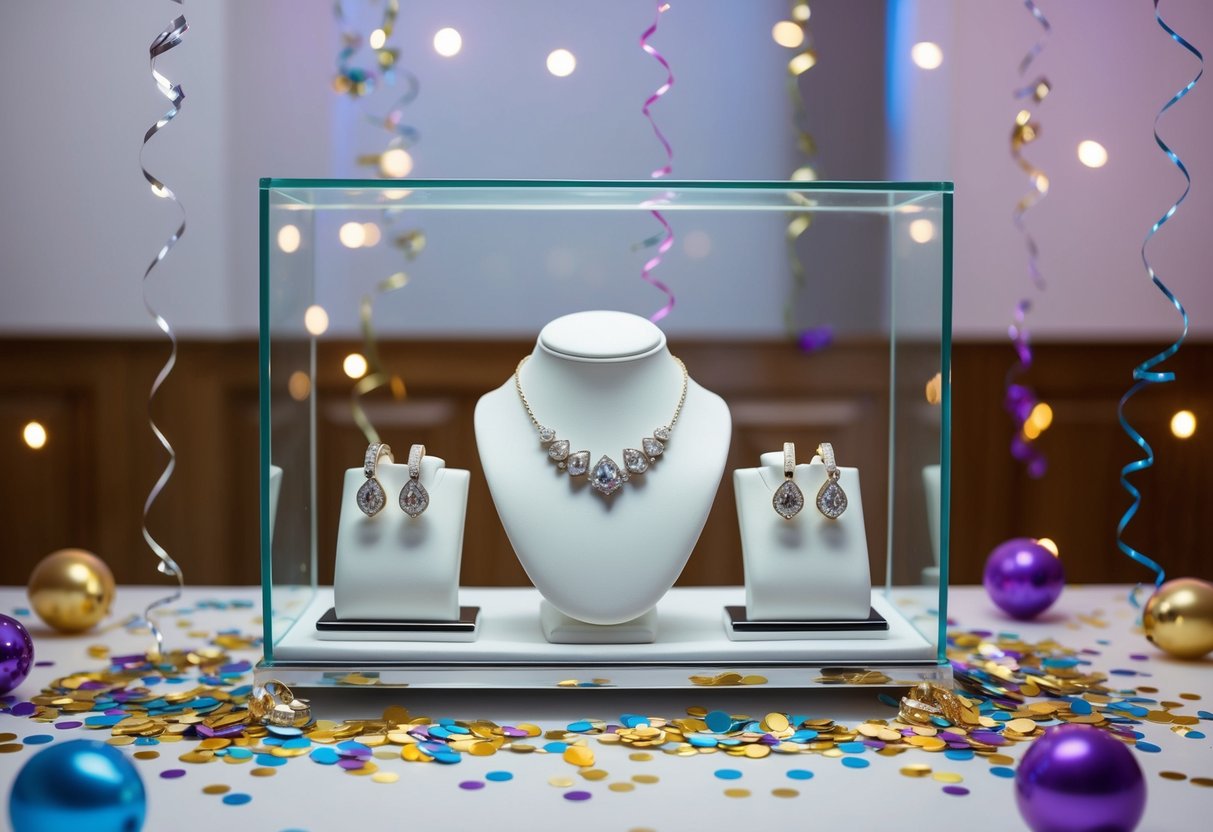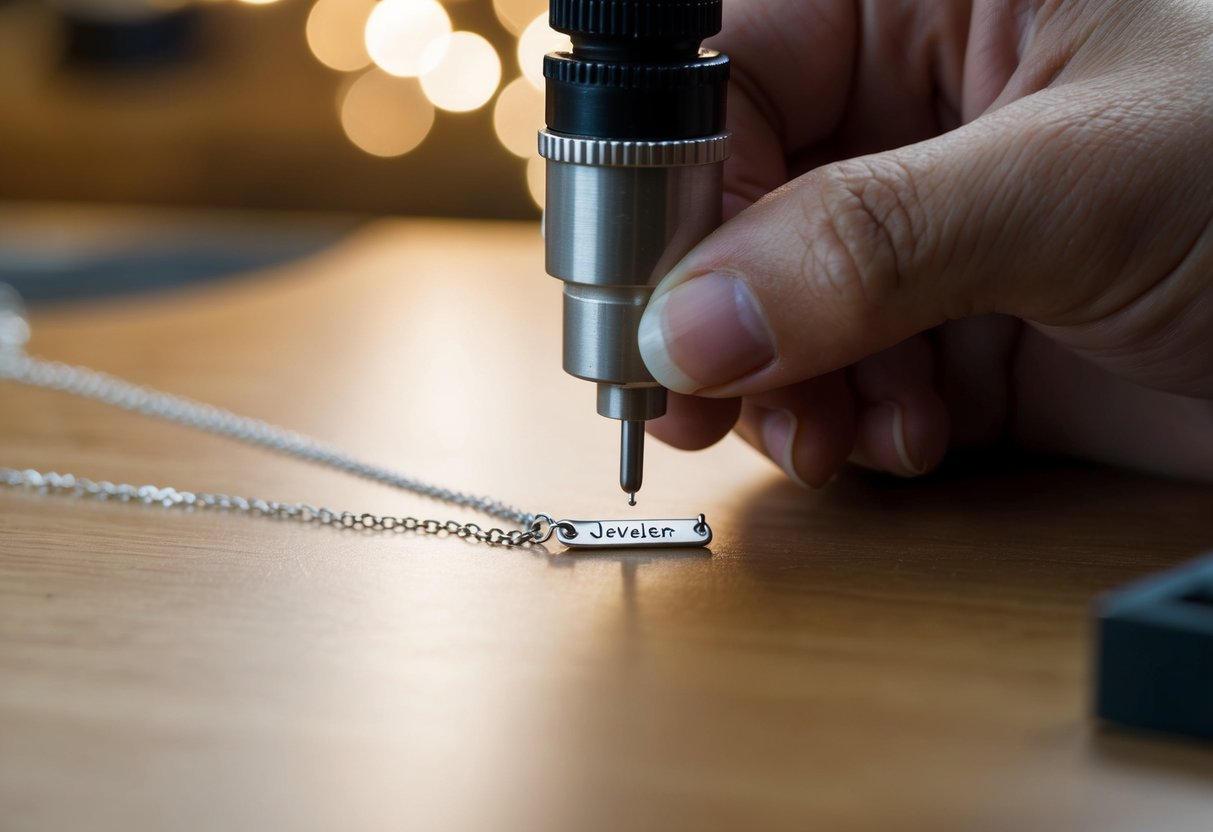
Inspiration Sources: How to Find Ideas for Your Personalized Jewelry Design
Check out our personalized jewelry collections! (kids drawing jewelry, coin jewelry, wire jewelry, fingerprint jewelry, handwriting jewelry, and more)
Creating personalized jewelry takes more than just skill; it requires inspiration from a multitude of sources. As we embark on this creative journey, let's explore an array of cultural symbols, art movements, and natural motifs that can spark new ideas. Our aim is to uncover how these elements come together to form unique designs that resonate personally.
We find inspiration not just in history and culture, but also in the rich colors of gemstones and the intricate textures of precious metals. Nature provides an overflowing palette of colors and shapes that can breathe life into our designs. By exploring these elements, we can craft pieces that not only capture the essence of our individuality but also tell a compelling story.
Fashion trends play a significant role in shaping our collections. We keep an eye on emerging trends to blend contemporary styles with timeless elegance. By doing so, our designs stay both relevant and deeply personal, ensuring that each piece of jewelry becomes a cherished keepsake.
Key Takeaways
- Inspiration comes from culture, art, and nature.
- Gemstones and trends influence our unique creations.
- Personal stories transform designs into cherished keepsakes.
Exploring Personal Style and Preferences
When designing personalized jewelry, knowing what we love is a great starting point. This means reflecting on our style preferences. Do we lean more towards classic designs, or do we favor contemporary aesthetics? Let's consider whether minimalist or bold pieces catch our eye more.
Next, we should think about materials. Do we admire the look of gold, silver, or perhaps platinum? Each metal brings a different vibe to our creations. Considering our metal preference can guide our design choices significantly.
Personal symbols or motifs can also be a rich source of inspiration. Are there particular symbols or themes that resonate with us? These might include initials, birthstones, or even cherished imagery that holds special meaning.
Inspiration is all around us, sometimes even in our favorite colors and patterns. We might adore vibrant hues or prefer subtle tones. Using our color palette can add another layer of personality to our jewelry designs.
While exploring our preferences, let’s also think about the occasions we are designing for. A piece intended for everyday wear might differ in design from one meant for special events. Versatility can be a key consideration based on our lifestyle.
Lastly, personal stories and memories can be powerful inspirations. Reflecting on these can infuse our designs with a sense of unique personal history. In considering these elements, we can craft jewelry that truly reflects who we are.
Historical Motifs and Periods
Exploring historical motifs can spark creativity in jewelry design, drawing on the uniqueness of various art movements. By examining styles like Art Nouveau, Art Deco, Victorian, Georgian, Retro, and Vintage, we open up a wide array for personal expression.
Art Nouveau and Art Deco
Art Nouveau and Art Deco stand out with their distinct styles. Art Nouveau, popular in the late 19th and early 20th centuries, emphasized organic forms and natural elements. Floral patterns, curving lines, and intricate detailing showcase the era's love for nature.
In contrast, Art Deco, emerging in the 1920s and 1930s, brought bold geometrical shapes and lavish ornamentation. Large gemstones, symmetrical patterns, and sleek lines define this vibrant period. These styles differ sharply but both offer striking and memorable elements for personalized jewelry designs.
Victorian and Georgian Influences
The Victorian era, spanning from 1837 to 1901, is characterized by its romantic and elaborate aesthetics. Jewelry from this period often features motifs like hearts, flowers, and bows. Techniques such as enamel work and intricate settings add elegance and detail.
Georgian influences, which predate the Victorian period, emphasize symmetry and natural motifs. Jewelry from the Georgian era was often hand-crafted with care, using materials like gold and silver. These pieces often include gemstones in various cuts, adding opulence and richness.
Retro and Vintage Trends
Retro and vintage trends draw from the mid-20th century, bringing back flair and style. Retro jewelry, prominent from the 1940s to the 1960s, embraced bold designs with oversized gemstones and mixed metals. The use of gold is prominent, creating a warm and inviting aesthetic.
Vintage trends celebrate the unique styles from decades past, incorporating influences from the earlier 20th century as well. Both retro and vintage periods encourage a nostalgic feel, inviting us to reinvent classics with a modern touch. Their timeless appeal is perfect for creating individualized statements through personalized jewelry.
Cultural Symbolism and Heritage
Jewelry offers a beautiful avenue to express our cultural symbolism and heritage. From Celtic knots to Maori koru, these symbols can be intertwined to tell a personal story. Such designs allow us to celebrate our identity and cultural background through pieces that hold sentimental value.
Our cultural history often ties into our family lineage. Many of us have specific family symbols or heirlooms that serve as a source of inspiration for jewelry design. This connection helps keep family traditions alive and provides a sense of belonging and continuity through generations.
In many cultures, certain gemstones or metals hold specific meanings. For example, jade in China is seen as a symbol of purity and moral integrity. When choosing materials, these symbolic associations can add layers of meaning to our personalized creations, transforming simple adornments into cherished tokens of heritage.
We have the opportunity to explore multicultural symbols. Integrating elements from diverse backgrounds broadens the scope of our designs and enhances their uniqueness. This fusion of styles not only creates visually captivating jewelry but also bridges different cultural narratives.
A list of ideas:
- African tribal patterns: intricate and vibrant
- Native American motifs: spiritual and nature-based
- Asian calligraphy: elegant and artistic
Nature's Palette
Inspired by the vivid elements in our environment, we draw from nature to craft unique jewelry designs. From the delicate motifs found in flora and fauna to the mystical appeal of celestial bodies, and the timeless allure of the sea, our creations capture the essence of the world around us.
Floral and Fauna Themes
We often look to the rich world of plants and animals for inspiration. Picture a bracelet adorned with delicate roses, daisies, or lilies, each petal and leaf rendered in exquisite detail. Animal motifs, like birds and butterflies, add a lively element to pieces. Engraving is a popular technique to capture these intricate details, making each piece a work of art. The choice of materials enhances these designs further: gold exudes warmth, while silver presents a cool, elegant shine. These themes evoke feelings of renewal, growth, and the beauty of life, offering a personal touch for those who love nature.
Celestial Bodies and Astrology
The cosmos offers endless inspiration, with its stars, moons, and planets, inviting us to capture the mysteries of the universe. Jewelry pieces featuring constellations or zodiac symbols resonate with a sense of wonder and personal connection. Star-shaped pendants or moon phase rings can reflect individual journeys and beliefs. Utilizing stones like moonstone or sapphire, we create pieces that glow with an ethereal light, adding a layer of mysticism. These elements allow us to intertwine personal stories with the vastness of the universe in our jewelry designs.
Sea Elements and Nautical Charm
The sea's timeless beauty provides a wealth of inspiration. Consider earrings shaped like sea shells or pendants portraying waves. These elements convey a sense of adventure and freedom. With pearls often featured in our designs, we highlight the ocean’s elegance. Anchor or compass motifs are also popular, symbolizing guidance and direction. The use of materials like turquoise and aquamarine captures the myriad shades of the sea. These designs resonate with those who cherish the calm and expanse of oceanic beauty, bringing a piece of the sea's mystery into our daily lives.
The Influence of Art and Artists
Artists have always been a source of inspiration, offering us unique ideas and designs that capture the imagination. From classical paintings to modern street art, these creative expressions can deeply influence our personalized jewelry pieces.
Famous Paintings and Sculptures
Famous artworks can provide a treasure trove of inspiration. Masterpieces like Van Gogh's "Starry Night" or Michelangelo's "David" present elements of color, form, and emotion that are timeless.
We can draw from the bold colors in Monet's water lilies or the intricate details of Renaissance sculptures to create exquisite pieces. These famous works have a universal appeal, making elements drawn from them resonate with a wide range of jewelry lovers.
Exploring art museums and galleries can reveal these masterpieces' endless potential. They offer us a direct connection to the genius of the artists and the chance to bring a piece of their creativity into our designs.
Contemporary Art Movements
Contemporary art movements offer fresh and innovative ideas. Minimalism, with its clean lines, can lead us to sleek jewelry designs. Meanwhile, the bold, abstract forms seen in Cubism challenge us to think in nontraditional shapes.
The use of mixed media and recycled materials in modern art promotes sustainable practices. This approach inspires us to incorporate eco-friendly materials into our creations.
By attending exhibitions and following current artists on platforms like Instagram, we can stay ahead of trends and ensure our designs remain relevant and inspiring.
Street Art and Pop Culture
Street art and pop culture are vibrant sources of inspiration.
Bold colors and daring designs found in street murals often translate into eye-catching jewelry. Graffiti's energy can be mirrored in edgy, urban pieces.
Iconic pop culture imagery such as classic comic book motifs or music legends opens up countless avenues for personalized pieces. Incorporating elements from popular culture allows us to create jewelry that tells a story, resonating with individual preferences and tastes.
Street fairs, festivals, and social media are great ways to discover these dynamic art forms and bring that freshness into our jewelry designs.
Gemstones and Material Meanings
Our journey into personalized jewelry design takes us through birthstones with rich histories, the allure of precious metals, and the rise of unconventional, ethical materials. Understanding these elements fuels creativity and meaningful design.
Birthstones and Their Stories
Birthstones each carry unique stories and sentiments, often rooted in cultural and historical contexts. Garnet for January symbolizes protection and deep affection. February's amethyst offers clarity and balance, while emerald in May represents renewal and growth. Crafting jewelry with birthstones not only adds a personal touch but also connects the wearer to ancient traditions. It can be fun and meaningful to choose stones based on personal or gifted significance. We love how the variations in color and properties offer endless possibilities for making our jewelry truly stand out.
Precious Metals and Alloys
Precious metals such as gold, silver, and platinum bring different aesthetics and benefits to jewelry. Gold, with its rich hue, is traditionally valued and brings warmth to any piece. Silver is appreciated for its sleek, versatile appearance, perfect for both casual and formal wear. For those preferring durability, platinum provides a strong, tarnish-resistant option.
Alloys, like rose gold or white gold, offer additional colors and their own strengths, providing even more options for customization.
Unconventional and Ethical Materials
Exploring unconventional and ethical materials can lead to distinctive designs. Reclaimed wood, glass, or recycled metals introduce texture and a sense of sustainability. We appreciate how these choices not only add unique visual interest but also lessen our environmental impact. Designers often turn to materials like lab-created diamonds, which replicate the appearance of natural stones without the associated mining impact. These less traditional materials might also include biodegradable elements, blending fashion with responsibility. Eco-conscious consumers will find joy in such conscious choices.
Techniques and Craftsmanship
Handcrafting versus Machine Manufacturing
Handcrafting involves skilled artisans who create each piece with painstaking detail. The tactile nature of this method allows for personal touches and unique imperfections, enhancing character. Pieces are often one-of-a-kind, embodying an artisan’s flair.
Machine manufacturing, on the other hand, emphasizes precision and efficiency. Ideal for mass production, this method uses technology to ensure uniformity and quickly replicates designs. Both techniques have merit, and our choice depends on whether individuality or uniform precision is the priority. The blend of both can yield innovative designs.
Jewelry Making Workshops and Classes
Participating in workshops and classes provides an interactive way to explore jewelry creation. These settings offer hands-on experience with different tools and materials, fostering creativity. Many workshops are led by experienced jewelers who impart valuable knowledge.
We gain insight into various fabrication techniques, from soldering to stone setting. These workshops not only hone our skills but also inspire design ideas. Whether a hobbyist or aspiring jeweler, engaging in these educational opportunities deepens our appreciation for the craft. Classes often introduce modern techniques, bridging tradition with innovation.
Modern Technologies in Jewelry Design
Modern technology transforms how we design jewelry today. 3D printing allows us to prototype designs with precision, quickly bringing concepts to life. This method enables intricate patterns that might be challenging to craft by hand.
Computer-aided design (CAD) offers flexibility in visualizing ideas before production, enabling the fine-tuning of details. Additionally, laser cutting enhances accuracy in shaping and etching. The integration of these technologies with traditional techniques broadens our creative capabilities and pushes boundaries in personalized jewelry design. The fusion of old and upcoming methods ensures both quality craftsmanship and innovative designs.
Trends and Fashion Forecasts
Staying ahead of the curves in fashion keeps our jewelry designs fresh and exciting. We find it essential to track upcoming trends that spark new ideas. Many of us love incorporating popular elements like chunky chains, sustainable materials, and bold colors into our personalized pieces.
Our inspiration often comes from observing the latest runway shows. Designers showcase evolving styles, which are perfect indicators of what might influence jewelry designs. Analyzing the use of textures, metals, and themes helps us predict emerging trends.
Another key source is fashion magazines and online platforms. These mediums frequently highlight celebrity jewelry, editorial shoots, and seasonal collections, which all play a part in shaping future design directions. We keep an eye on these outlets to identify new possibilities.
Fashion forecasts also often point toward the comeback of vintage styles or new spins on classic pieces. These insights can inspire us to try unique combos in our designs, blending timeless elegance with modern flair. Tracking these trends can be invaluable for crafting pieces that resonate with current tastes.
For a concise overview, here's a list of current trends we are watching:
- Layered necklaces
- Bright gemstones
- Asymmetrical designs
By combining these trends with our creativity, we ensure our pieces speak to the fashion-forward audience, setting a style statement that's individually tailored.
Personal Narratives and Storytelling
We find inspiration in our unique stories, with jewelry designs that reflect family heritage, remarkable life events, and deeply held beliefs. These elements enrich each piece with profound personal meaning.
Family Heritage and Ancestry
Our family heritage can be a rich source of inspiration, helping us create pieces that honor our ancestral roots. Each family has cherished traditions, symbols, or heirlooms that lend authenticity to jewelry styles.
Incorporating emblems that represent a specific heritage or using gemstones that echo family connections can create meaningful designs. For example, a piece might feature traditional patterns from a grandparent's homeland or an antique locket design passed through generations. By embedding elements of family history, we fashion jewelry that acts as a tribute to our lineage.
Milestones and Life's Moments
Milestones such as engagements, anniversaries, and personal achievements offer a wealth of creative ideas for jewelry design. These significant events shape who we are and hold special meaning.
Many individuals choose to celebrate milestones with specific designs, such as a birthstone necklace marking a child's birth or a bracelet commemorating a recent personal triumph. Designing jewelry that captures these moments allows us to keep fond memories close, turning key life experiences into wearable treasures. Every time we wear these pieces, we're reminded of our journey and the moments that define us.
Personal Beliefs and Values
Our values and beliefs profoundly influence the designs we create, imbuing them with personal narratives. Whether inspired by spiritual beliefs, life philosophies, or cherished causes, these elements become emblazoned on jewelry.
For instance, we might utilize symbols from a belief system, such as a cross, lotus, or infinity symbol, to craft pieces with personal significance. Additionally, integrating materials like eco-friendly metals appeals to those prioritizing sustainability. When jewelry embodies our deepest values, it not only enhances our personal style but also acts as an expression of our inner selves and what we hold dear. With every design choice, we tell a story of our values and identity.
Celebrity and Influencer Inspirations
When it comes to designing personalized jewelry, looking towards celebrities and influencers can spark creativity. Many public figures set fashion trends, and we can draw from their choices as a source for new ideas.
Celebrities such as Rihanna and Zendaya often showcase pieces that combine elegance with modern trends. We can analyze their red carpet appearances to discover unique combinations of styles and materials.
Influencers like Chiara Ferragni and Aimee Song regularly share insights on current jewelry trends on their platforms. Following their online posts gives us access to a world of fresh, stylish concepts.
By observing their use of bold colors, intricate designs, and unconventional materials, we can adapt these aspects into our jewelry designs. Following their preferences helps us integrate popular motifs into our products.
Keeping an eye on social media trends allows us to quickly identify the jewelry preferences of stars and influencers. Utilizing this information in our designs ensures that we remain relevant and appealing in the jewelry world.
Combining Textures and Colors
When we create personalized jewelry, mixing textures and colors adds unique flair. Think about how different materials look and feel together. For example, smooth pearls next to rougher, hammered metals can create a captivating contrast.
Exploring the color wheel is a fun way to combine hues. Complementary colors, like blue and orange, can provide a striking effect. On the other hand, analogous colors, such as hues of green and yellow, offer a more subdued aesthetic.
Metal finishes also play a crucial role. Polished gold provides a classic shine, while matte silver gives a modern look. Mixing these can highlight design elements effectively.
Playing with color isn't limited to gemstones. Use enamel and beads to add pops of color and texture. By layering vibrant components, we can create dynamic designs that reflect individuality.
Bring patterns into play. Stripes, dots, or geometric designs add another layer of texture. Pairing these with solid colors boosts visual interest.
Materials like wood, leather, and fabric offer tactile experiences. Each brings its unique texture and color, making every piece feel one-of-a-kind.
Experimentation is key. By trying out various combinations, we uncover what works best for our aesthetic. This creative process allows us to craft pieces that truly represent our style.
Interactivity and Customer Co-Creation
Engaging our customers in the jewelry design process fosters creativity and adds a personal touch to each piece. This connection can be achieved through interactive design workshops and social media engagement.
Design Workshops and Collaboration
We host design workshops, providing an immersive experience where customers can engage directly with our jewelry designers. These workshops allow them to understand the intricacies of design while contributing their ideas. This co-creative environment encourages customers to take on a hands-on role in their jewelry creation journey.
In these sessions, we guide participants through selecting materials, shapes, and styles. Collaboration is facilitated using digital tools, allowing instant modifications and visualizations. Workshops are small to ensure personalized attention, ensuring each participant feels valued and heard.
Social Media Engagement
Social media serves as a dynamic platform to connect with our audience, gathering insights and inspiration. We actively encourage our followers to share their ideas and feedback on potential designs. Through polls, stories, and interactive posts, we engage with our audience in meaningful ways.
This communication provides insight into current trends and preferences. By featuring customer-inspired designs on our pages, we celebrate our community's creativity. Importantly, these platforms also offer a space for customers to showcase their personalized pieces, enriching our brand narrative with authentic stories.
Frequently Asked Questions
Our guide answers questions about transforming old jewelry, utilizing free online design tools, and creating personalized designs. Explore resources for design inspiration and insights into the custom jewelry-making process.
What are some creative ways to repurpose an old diamond ring into new jewelry?
We can transform an old diamond ring into new jewelry by resetting the diamond into a pendant, earrings, or even a bracelet. Consider using metal from the previous design for a modern piece or combining stones from various heirlooms.
Can you recommend resources for designing my own ring in 3D online for free?
There are several online platforms that allow us to design rings in 3D for free. Tinkercad, Blender, and SketchUp offer user-friendly interfaces for beginners. These tools provide tutorials to aid in crafting detailed designs.
What steps should I follow to begin creating my own jewelry designs?
First, research current trends and decide on a theme or style. Sketch initial ideas and explore various materials. Finally, use online design tools or work with a jeweler to bring your creations to life.
How can I ensure my personalized jewelry design stands out and looks professional?
We should focus on unique design elements, such as unusual gemstone cuts or custom engravings. Working with quality materials and paying attention to detail enhances the professionalism and appeal of our jewelry. Seeking expert advice is helpful.
Where can I find inspiration for creating unique and meaningful jewelry pieces?
Inspiration can be drawn from nature, architecture, art, or our personal experiences. Visiting museums, reading design books, or exploring various cultures can ignite creativity for our jewelry designs.
What's the process for having custom jewelry made from conception to completion?
The journey starts with ideation and sketching designs. From there, select materials and collaborate with a jeweler to create a prototype. The final steps involve crafting and refining the piece to meet our specifications.

